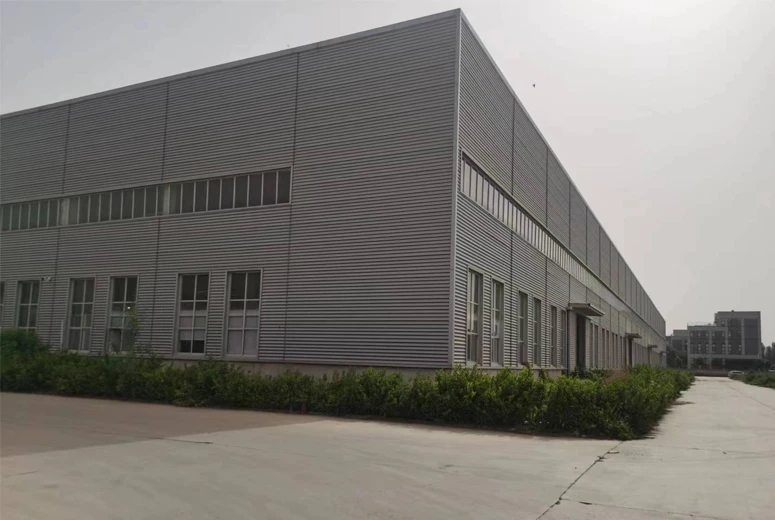Corrugated Pipe Production Equipment for Efficient Manufacturing Solutions
The Evolution of Corrugated Pipe Forming Machines
The development of corrugated pipe forming machines has become a transformative factor in the manufacturing industry, particularly in the production of pipes used for various applications such as drainage, ventilation, and electrical conduits. The corrugated pipe, known for its flexibility and strength, has gained immense popularity across multiple sectors. This article aims to explore the advancements in corrugated pipe forming machines, their operational mechanisms, and their significance in modern manufacturing.
Understanding Corrugated Pipes
Corrugated pipes are typically made from materials like polyethylene and polypropylene. Their unique ribbed design provides several benefits, including enhanced structural integrity, reduced weight, and increased flexibility. This design allows for easier installation and a higher resistance to crushing and deformation under pressure. As the demand for such pipes rises in construction, agriculture, and industrial applications, the necessity for efficient production processes has intensified.
The Mechanism of Corrugated Pipe Forming Machines
At the heart of producing corrugated pipes lies the corrugated pipe forming machine. The machine uses a combination of heating, molding, and cooling processes to transform raw materials into durable, flexible pipes. The operation typically involves several critical steps
1. Material Preparation The process begins with feeding raw thermoplastic materials into an extruder. This machine melts the plastic pellets to a molten state, ensuring uniform consistency.
2. Extrusion The molten material is then forced through a die to create a smooth tube. This tube serves as the foundation for the corrugation process.
3. Corrugation After extrusion, the tube enters the forming section of the machine, where it is shaped into corrugations by passing it through a series of molds. The molds imprint a specific ribbed profile onto the pipe, effectively creating the desired corrugated structure.
4. Cooling and Cutting Once formed, the corrugated pipe is cooled to retain its shape. It is then cut to the required lengths before being inspected for quality assurance.
corrugated pipe forming machine

5. Winding and Packaging Finally, the pipes are wound onto spools or packaged for shipment, ready to meet market demands.
Innovations in Corrugated Pipe Forming Machines
Recent technological advancements have significantly improved the performance and efficiency of corrugated pipe forming machines. Automation plays a crucial role, allowing for precise control over the manufacturing process. Modern machines are equipped with sophisticated sensors and software systems that monitor temperature, pressure, and speed, ensuring optimal production conditions.
Moreover, advancements in material science have introduced new thermoplastics that enhance the properties of corrugated pipes. For example, the use of recycled materials has become more prevalent, contributing positively to sustainability efforts within the industry. Consequently, modern forming machines are designed to accommodate various materials, facilitating greater flexibility in production.
The Importance of Efficiency and Sustainability
In today’s competitive market, efficiency and sustainability are paramount. Corrugated pipe forming machines are evolving to meet these demands by reducing waste and energy consumption. Process optimizations, such as minimizing cycle times and improving material usage, contribute significantly to eco-friendly practices in manufacturing.
Moreover, industries are adopting lean manufacturing principles, which emphasize eliminating waste while maximizing productivity. Corrugated pipe forming machines that align with these principles are better equipped to adapt to changes in demand and can quickly switch between different pipe sizes and materials.
Conclusion
The evolution of corrugated pipe forming machines underscores the dynamic nature of manufacturing technology. As the construction and industrial sectors continue to expand globally, the reliance on high-quality, durable, and flexible corrugated pipes will only increase. The advancements in forming machines not only enhance production efficiency but also contribute to sustainable manufacturing practices. As we move forward, ongoing innovations in this field will undoubtedly shape the future of infrastructure development and environmental sustainability.
-
High Frequency Straight Seam Welded Pipe Production Line-BzZhou Xinghua Machinery Equipment Manufacturing Co., LTD.|Precision Welding, High EfficiencyNewsJul.30,2025
-
High Frequency Straight Seam Welded Pipe Production Line|BzZhou Xinghua|Precision Welding&EfficiencyNewsJul.30,2025
-
High Frequency Straight Seam Welded Pipe Production Line - BzZhou Xinghua|Precision Engineering&EfficiencyNewsJul.30,2025
-
High-Frequency Straight Seam Welded Pipe Production Line-BzZhou Xinghua Machinery Equipment Manufacturing Co., LTD.NewsJul.30,2025
-
High-Frequency Straight Seam Welded Pipe Production Line-BzZhou Xinghua Machinery Equipment Manufacturing Co., LTD.|Precision Manufacturing, High EfficiencyNewsJul.30,2025
-
High Frequency Straight Seam Welded Pipe Production Line-BzZhou Xinghua Machinery Equipment Manufacturing Co., LTD.|Precision Steel Pipe Manufacturing&Industrial EfficiencyNewsJul.29,2025


